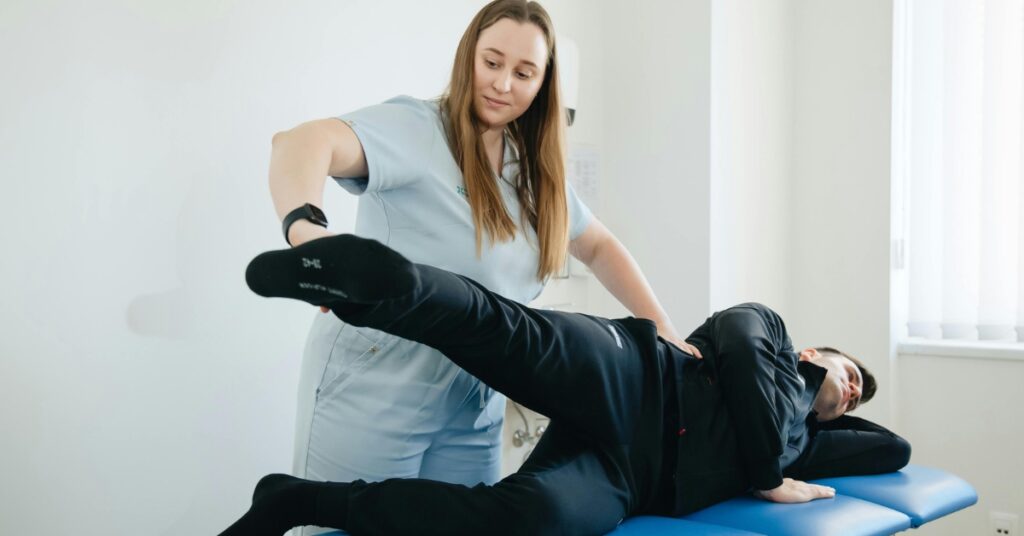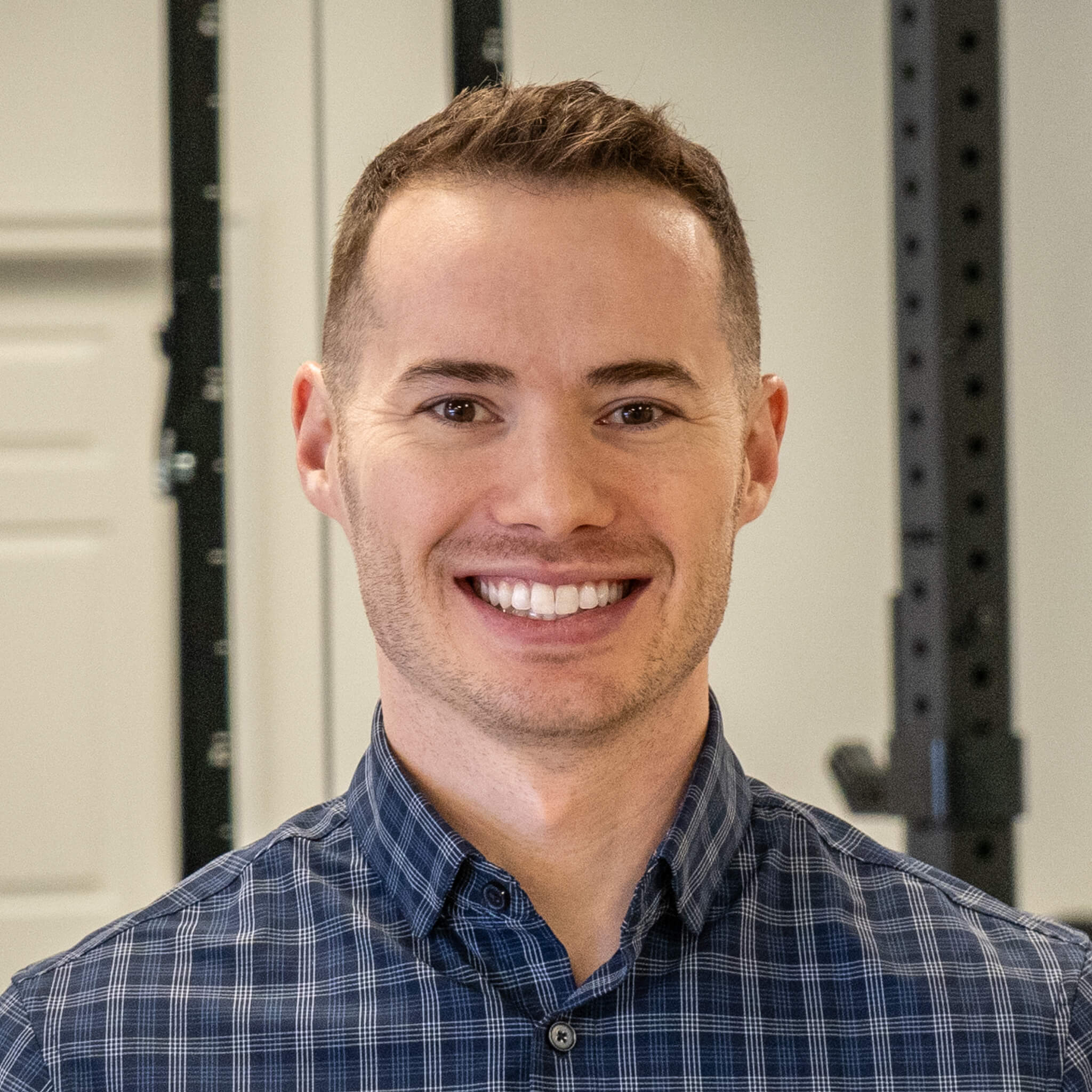If you’re an active adult or runner, gluteal tendinopathy can feel like the silent injury that’s ruining everything. One day you’re crushing your training plan, and the next you’re limping after a short jog.
This injury doesn’t just cause discomfort. It gets in the way of your momentum, your race goals, and even your confidence.
You might keep trying to run through it, hoping it magically disappears. Or maybe you’re resting completely and still not getting relief.
Let’s talk about what’s really going on, why so many people stay stuck in this injury cycle, and how you can finally move forward.

Gluteal Tendinopathy Symptoms (and How to Find Real and Lasting Relief!)
Gluteal tendinopathy can creep into your life with little warning. One week you’re powering up Horsetooth Rock, and the next you’re avoiding stairs like they’re your worst enemy.
If you’re dealing with lateral hip pain that flares up while walking, climbing stairs, or lying on your side, you’re not alone.
This is one of the most common injuries we treat in active adults across Fort Collins, especially runners and hikers.
Recognizing the Symptoms of Gluteal Tendinopathy
The signs aren’t always dramatic, but they can wreck your training or daily life if left unchecked.
Common symptoms of gluteal tendinopathy include:
- Pain on the outside of your hip or buttocks
- Discomfort when lying on the affected side
- Pain while climbing stairs, walking uphill, or standing on one leg
- Tenderness over the greater trochanter
- Weakness with resisted hip abduction
Many people mistake this for hip bursitis or general hip osteoarthritis. A proper clinical diagnosis matters.
Gluteal tendinopathy often affects the gluteus medius and minimus tendons at the greater trochanter and can lead to gluteal tendon tears if left untreated.
Ready to stop just managing pain and start healing the right way? At Up and Running Physical Therapy, we guide you through a proven 3-step recovery method so you can get stronger than ever—without pills, surgery, or rest.
Call us at (970) 500-3427, email info@upandrunningpt.com, or book your FREE Discovery Call.
We help you stay off the sidelines and keep building strength, mile after mile.
What’s Really Going On Inside the Hip?
This isn’t just an irritation of the soft tissue. Gluteal tendinopathy involves tendon degeneration, also called gluteal tendinosis.
These tendons break down over time when overloaded or under-recovered.
The pathophysiology is similar to what you might see in lateral elbow tendinopathy or even hamstring tendinopathy. Factors that can increase your risk include:
- High body mass index
- Muscle atrophy
- Poor gluteal muscle strength
Your gluteus medius and minimus are key stabilizers. When they’re not firing well, the rest of your body compensates, which only worsens the tendon injury.

Physical Therapy as First-Line Treatment
Here in Fort Collins, we work with runners, climbers, and hikers year-round.
Whether you’re gearing up for the Horsetooth Half Marathon or just want to hike Coyote Ridge without pain, physical therapy is the most effective first step.
At Up and Running PT, we build a pathophysiology-based treatment algorithm that’s customized to your goals.
Instead of rest, ice, and a hope for the best, we use strategies like:
- Progressive physical therapy exercises to rebuild hip muscle strength
- Resisted hip abduction to directly strengthen gluteal tendons
- Tendon loading programs to stimulate tendon health and regeneration
- Manual therapy to release surrounding tightness in the lateral hip
- Education on sleep, recovery, and movement mechanics
Unlike short-term pain relief strategies such as anti-inflammatory treatments or local corticosteroid injection, PT works on restoring tendon function for long-term success.
Other Treatment Options and Why PT Comes First
You may have read about corticosteroid injection, platelet-rich plasma, or even surgical repair. While those may sound appealing, especially during a flare-up, they don’t address the root causes.
Randomized controlled trials show that physical therapy outperforms injection in long-term outcome measures. Shockwave therapy and radial shockwave therapy can help certain cases, but only when paired with a solid strength program.
Surgical interventions like endoscopic gluteal tendon repair or endoscopic techniques are reserved for severe pain or partial thickness tears that don’t respond to conservative care. These are rare and NOT the first-line treatment.
Why Now Is the Time to Act
If you’re feeling gluteal pain that limits your ability to move, don’t ignore it. Diagnosing gluteal tendinopathy early can make all the difference in your recovery path.
An MRI finding might help confirm the issue, but most cases are managed effectively through clinical diagnosis and hands-on care.
Ready to stop just managing pain and start healing the right way? At Up and Running Physical Therapy, we guide you through a proven 3-step recovery method so you can get stronger than ever—without pills, surgery, or rest.
Call us at (970) 500-3427, email info@upandrunningpt.com, or book your FREE Discovery Call. We’re located at 2700 S College Ave, Suite 140, Fort Collins, CO 80525
We help you stay off the sidelines and keep building strength, mile after mile.


